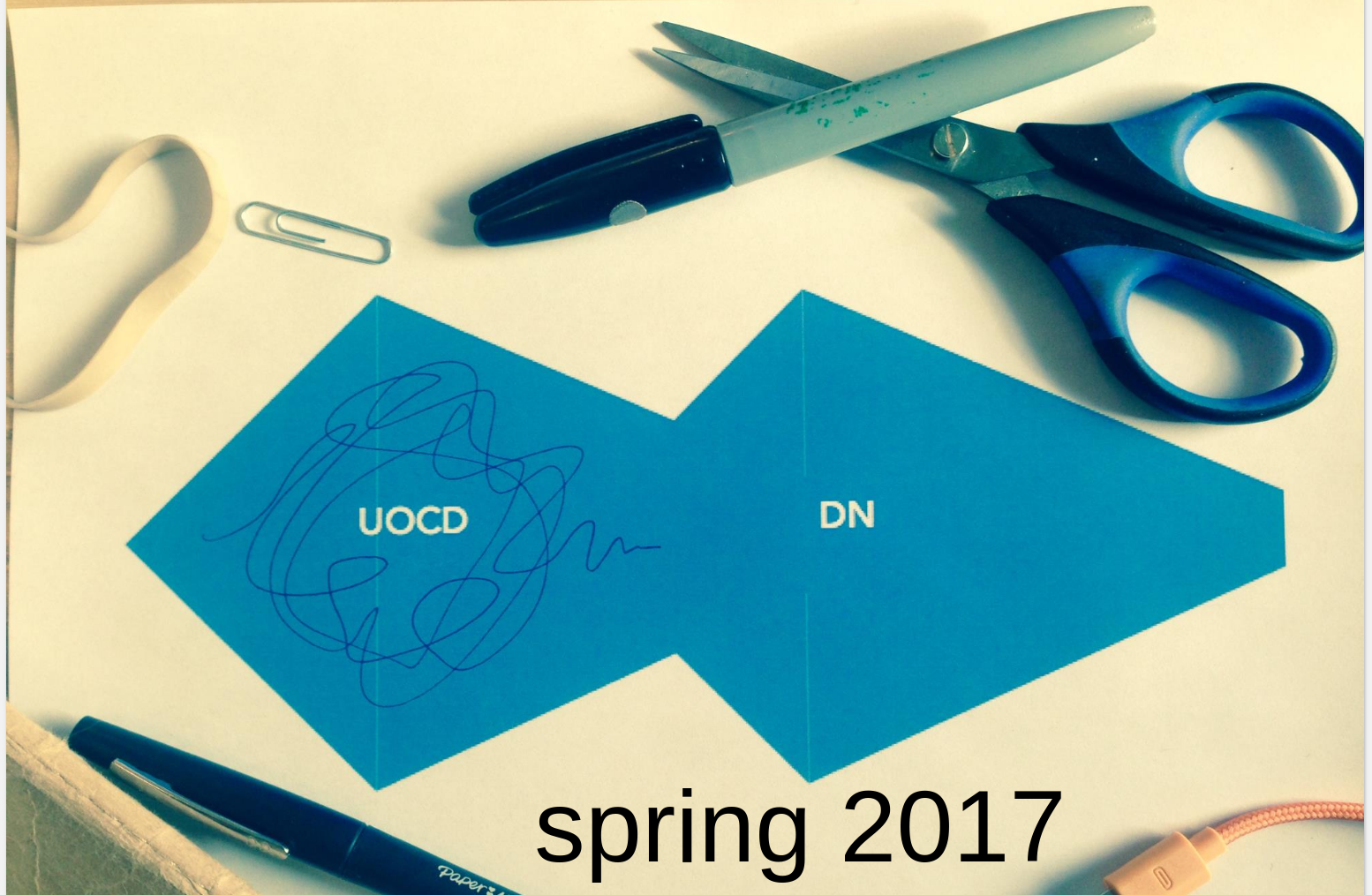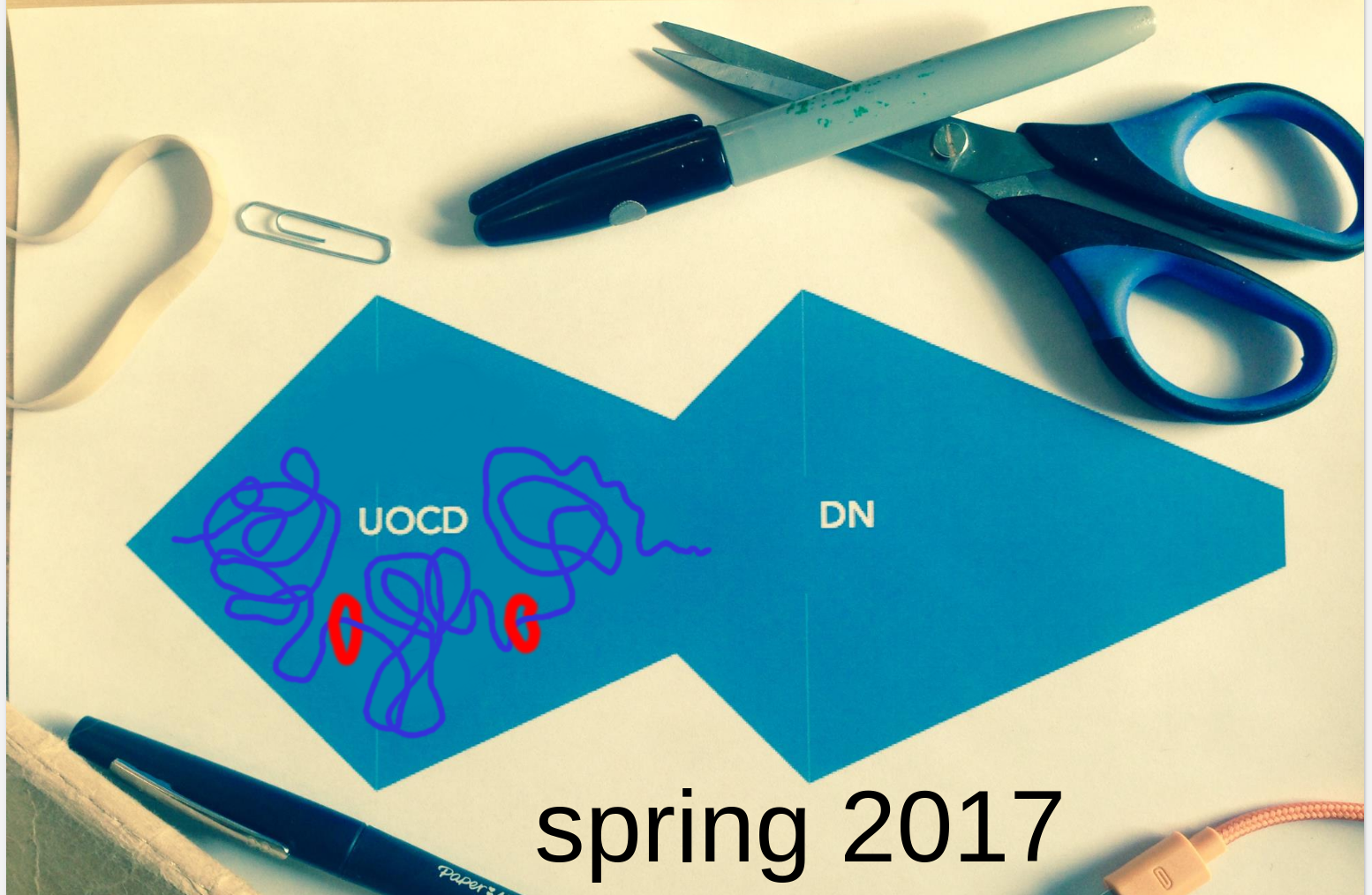
Some very competent and intelligent designers at IDEO made this graphic, which purports to show the path of the Design Process through the course of a project. Unfortunately, a close inspection and cursory comparison to my own experience quickly reveals that this diagram is a complete lie. As drawn, the squiggle has some twists and turns during the “research” phase, but once it passes through that checkpoint, it progresses in mostly uncontested forward motion. I’ve never had a project progress as straight as this diagram from Research to Concept, and certainly never from Concept to Design.

On the first day of class, Sara put this squiggle on the screen. To its credit, it does a much better job than the ideo squiggle of capturing the complete back-to-the-beginning cycles that real projects experience, but there’s an essential part of UOCD that isn’t represented at all: the design reviews…

Once you add the design review “portals”, the squiggle stops looking quite so attractive. Gone are the big, loopy curves back to square 1, and most of the iterative progress has gotten squished by the “points of no return” when one phase ends and the next begins.
What happened! Beginning-of-semester-me was very confused. UOCD promises to be a class all about the iterative design process, so why do such heavy-handed portals exist? What is the point of spending so much time preparing detailed design representations if it is all going to be thrown away once your teams realizes it was chasing the wrong idea? How can I make good decisions in Phase 1 before I’ve even started thinking about Phase 3?
Our team struggled with various forms of this quandary for much of the semester. In Phase 1, we struggled to decide whether to narrow, having only a speculative idea of what Phase 2 would require. In Phase 2, we would go into codesign with the sketches of an idea, and our users would immediately ask how much it was going to cost, a question we couldn’t honestly answer until we’d done the Phase 3 optimizations, leading to frustration on both sides of the table. Most importantly, we wondered what would we do if we made a mistake, and brought a bad idea to a design review?
Ultimately, none of those issues ever became a real problem. Of course some of the insights and personas we brought to the Phase 1 review were bad, but that was just an excuse to spend some Phase 2 time going back and getting curious about more users in more ways. Of course some (or in our case, all) of the ideas we brought to the Phase 2 review weren’t ultimately related to what we made in Phase 3, but the feedback we received was critical in giving us the confidence to loop back and generate more ideas, with the help of our refined personas.
This continual backtracking didn’t invalidate the design reviews, it enhanced them by letting us immediately build on the feedback we received. Revisiting ideation in Phase 3 gave us the ability to explore solutions to a deeper depth, while being guided but not limited by the feedback our users had given in Phase 2. Most importantly, by visiting each phase multiple times, I was able to personally and iteratively improve on the techniques and patterns that were successful, and grow as a designer and a teammate.
-
**Don’t worry about falling behind. **UOCD is a long class, and you will be happier to have a foundation that to get stressed out about staying on any particular schedule. Treat the design reviews as checkpoints, but allow yourself to rewind past them if it makes your final product better.
-
Think bold. The UOCD process is optimized for solving problems that nobody has solved before, filling needs that nobody realizes exists. Not all innovation takes this form, and there are times other processes are better suited to the job. Look for bold ideas, and they will lead you into territory where UOCD shines.
-
Keep going, no matter what happens. A good idea is built on the failures that came before it, and even time you spend going down the wrong path often comes back to be useful in surprising ways. Expect the process to be squiggly, counterintuitive, and occasionally frustrating, because those aspects are unavoidable. If you stick through until the end, it can also be rewarding, fulfilling, and surprisingly insightful.
Long live the squiggle,
Eric Miller
source document: The Shape of UOCD
